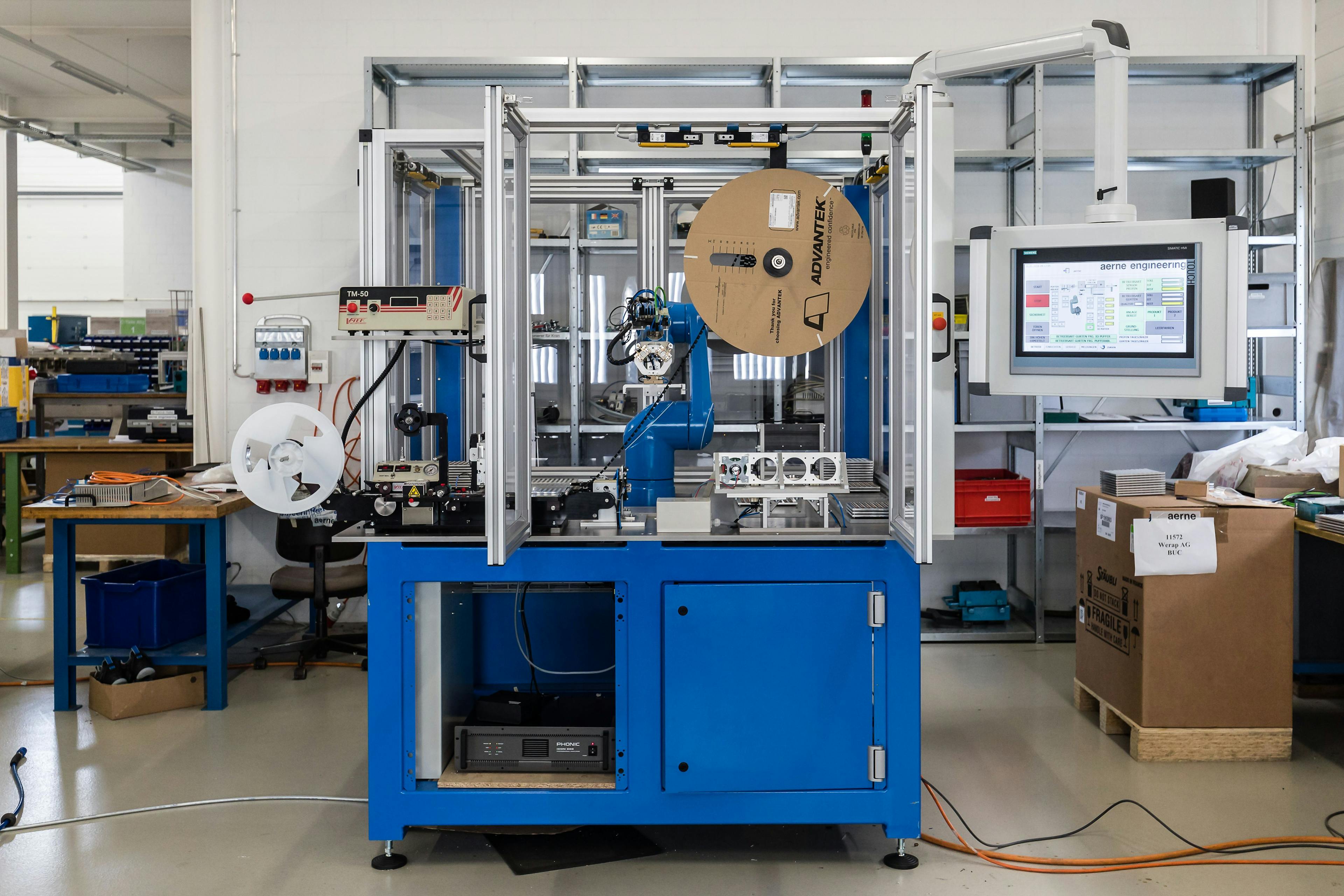Benefits
Starting point
Before realizing the sensor testing system, the sensors were fed to a demagnetizing station and then to an electrical testing station, involving a lot of manual work, checked there, and then deposited according to classification. Packing in the blister was also performed only partially automatically.
Solution
With the new sensor testing system, the manual work was reduced to loading the workpiece carriers with untested sensors, the removal of tested sensors, and the removal of the packaged sensors. A Stäubli 6-axis robot acts as the core element. This feeds the untested sensors first to a demagnetizing station with a double gripper, and then to a centering station with an alignment check. The centering and alignment check ensures that the part is in the gripper with repeat accuracy and in the correct rotational position. This is important for the subsequent station, which the robot also operates: the electrical testing station. At this station, which is provided in duplicate due to cycle time reasons, the parts are deposited and connected to by means of a swivel operation. After the electrical test, the part is swiveled back and gripped by the robot again, so that the now classified part can either be deposited in an empty workpiece carrier or directly in the packaging system. The workpiece carriers are designed so that they can be stacked. Stacking and unstacking are done with an additional robot gripping function.
Advantages for the customer
- Sources of error eliminated
- Higher throughput thanks to unattended testing
- Reduced personnel costs










